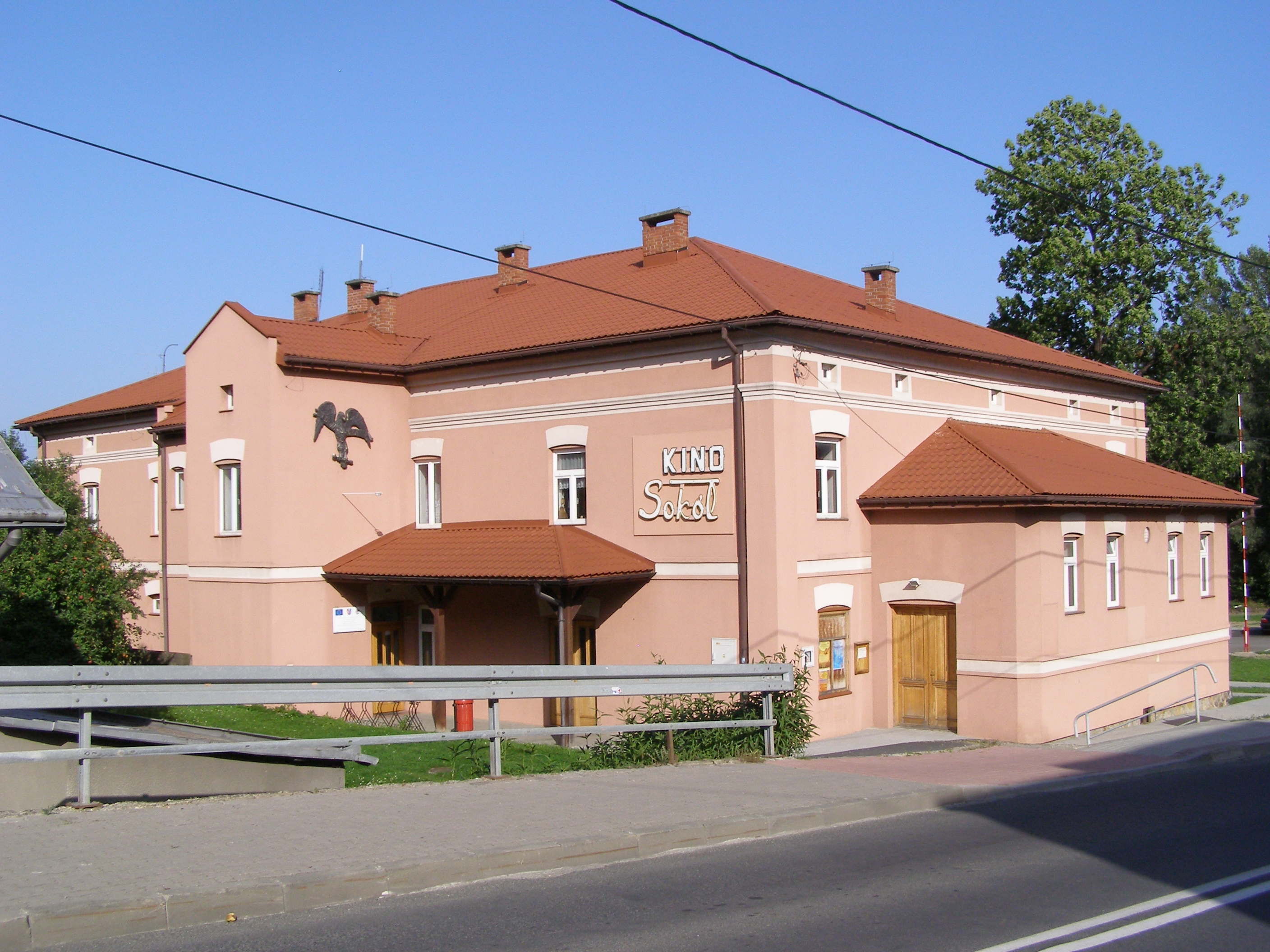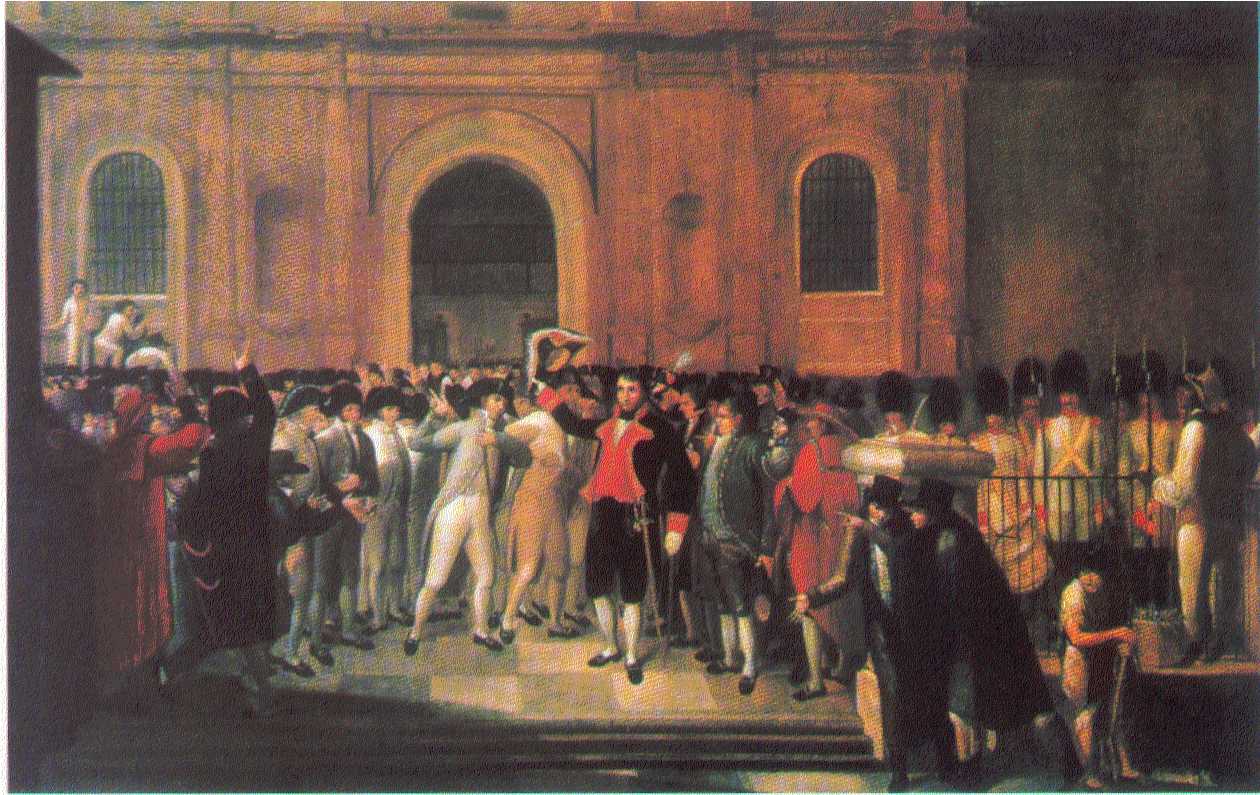|
Anna Teresa Ossolińska (XVIII-1810)
Princess Anna Teresa Potocka née ''Ossolińska'' (1746–1810) was a Polish noblewoman, philanthropist and Freemason.Hasło: Loże adopcyjne, (w:) N. Wójtowicz, Masoneria. Mały słownik, Warszawa 2006, s. 225–227. Life She was the daughter of Józef Ossoliński and Teresa Stadnicka and the sister of Józef Salezy Ossoliński. She married Józef Potocki in December 1760, and became the mother of the writer Jan Potocki. She was a supporter of the Bar Confederation (1768-1771). She was known for her philanthropic work and founded a charitable society. When a Woman's Adoption Lodge of the Masonic Order was founded in Poland in 1769, she became its Grand Mistress, counting other noblewomen such as Elżbieta Czartoryska (1736–1816) among its members. She is known as the founder of the church at Rymanów Rymanów (; or ; ) is a town located in the Subcarpathian Voivodeship, in the southeastern tip of Poland, with 3,585 inhabitants. It is a capital of a separate gmina, comm ... [...More Info...] [...Related Items...] OR: [Wikipedia] [Google] [Baidu] |
Rymanów
Rymanów (; or ; ) is a town located in the Subcarpathian Voivodeship, in the southeastern tip of Poland, with 3,585 inhabitants. It is a capital of a separate gmina, commune within powiat of Krosno, Krosno County. Rymanów is situated in the heartland of the Doły Jasielsko Sanockie, Doły (Pits) valley, and its average altitude is Above mean sea level, above sea level, although there are some hills located within the confines of the town. History The town was built by the Duke Vladislaus II of Opole, Naderspan (Vladislaus II) of Silesia, the local representative of king Louis I of Hungary. Initially the town was named ''Ladisslavia'', after the founder, and was inhabited primarily by settlers of central Germany (''Reimannshau''), largely overpopulated in late Middle Ages. In 1376, the town received a city charter based on the Magdeburg Law, which granted the town with a significant level self-government. During the reign of Władysław I the Elbow-high, Ladislaus I of Poland ... [...More Info...] [...Related Items...] OR: [Wikipedia] [Google] [Baidu] |
18th-century Lithuanian Women
The 18th century lasted from 1 January 1701 (represented by the Roman numerals MDCCI) to 31 December 1800 (MDCCC). During the 18th century, elements of Enlightenment thinking culminated in the Atlantic Revolutions. Revolutions began to challenge the legitimacy of monarchical and aristocratic power structures. The Industrial Revolution began mid-century, leading to radical changes in human society and the environment. The European colonization of the Americas and other parts of the world intensified and associated mass migrations of people grew in size as part of the Age of Sail. During the century, slave trading expanded across the shores of the Atlantic Ocean, while declining in Russia and China. Western historians have occasionally defined the 18th century otherwise for the purposes of their work. For example, the "short" 18th century may be defined as 1715–1789, denoting the period of time between the death of Louis XIV of France and the start of the French Revolution, ... [...More Info...] [...Related Items...] OR: [Wikipedia] [Google] [Baidu] |
Bar Confederates
Bar or BAR may refer to: Food and drink * Bar (establishment), selling alcoholic beverages * Candy bar ** Chocolate bar *Protein bar Science and technology * Bar (river morphology), a deposit of sediment * Bar (tropical cyclone), a layer of cloud * Bar (galaxy), a feature of many spiral galaxies * Bar (unit), a unit of pressure * BAR domain, a protein domain * Bar stock, of metal * Sandbar Computing * Bar (computer science), a placeholder name in programming * Base Address Register in PCI * Bar, a mobile phone form factor * Bar, a type of graphical control element Typography * Fraction bar * Overbar, a line over a formula or segment of text * Underbar, a line under a formula or segment of text * Vertical bar Law * Bar (law), the legal profession * Bar association * Bar examination Media and entertainment * ''Bar'' (Croatian TV series) * Bar (Czech TV series) * Bar (dance), Turkey * Bar (music), a segment * Bar (Polish TV series) * Bar (Slovenian TV series) * ''Bay Area ... [...More Info...] [...Related Items...] OR: [Wikipedia] [Google] [Baidu] |
Potocki Family
The House of Potocki (; plural: Potoccy, male: Potocki, feminine: Potocka) was a prominent szlachta, Polish noble family in the Kingdom of Poland (1385–1569), Kingdom of Poland and magnates of the Polish–Lithuanian Commonwealth. The Potocki family is one of the wealthiest and most powerful aristocratic families in Poland. History The Potocki family originated from the small village of Potok Wielki, Świętokrzyskie Voivodeship, Potok Wielki; their family name derives from that place name. The family contributed to the cultural development and history of Poland's Eastern Borderlands (today Western Ukraine). The family is renowned for numerous Polish statesmen, military leaders, and cultural activists. The first known Potocki was Żyrosław z Potoka (born about 1136). The children of his son Aleksander (~1167) castelan of Sandomierz, were progenitors of new noble families such as the Moskorzewski, Stanisławski, Tworowski, Borowski, and Stosłowski. Jakub Potocki (c. 1 ... [...More Info...] [...Related Items...] OR: [Wikipedia] [Google] [Baidu] |
18th-century Polish Women
The 18th century lasted from 1 January 1701 (represented by the Roman numerals MDCCI) to 31 December 1800 (MDCCC). During the 18th century, elements of Enlightenment thinking culminated in the Atlantic Revolutions. Revolutions began to challenge the legitimacy of monarchical and aristocratic power structures. The Industrial Revolution began mid-century, leading to radical changes in human society and the environment. The European colonization of the Americas and other parts of the world intensified and associated mass migrations of people grew in size as part of the Age of Sail. During the century, slave trading expanded across the shores of the Atlantic Ocean, while declining in Russia and China. Western historians have occasionally defined the 18th century otherwise for the purposes of their work. For example, the "short" 18th century may be defined as 1715–1789, denoting the period of time between the death of Louis XIV of France and the start of the French Revolution ... [...More Info...] [...Related Items...] OR: [Wikipedia] [Google] [Baidu] |
Ossoliński Family
The House of Ossoliński (plural: Ossolińscy) was a szlachta, Polish aristocratic family from the Lesser Poland region. Because Polish adjectives have different forms for the genders, Ossolińska is the form for a female family member. History The Ossolińskis were a magnate family. They appeared in the historical annals at the beginning of the 14th century. The progenitor of the family was , son of Great Marszałek, Marshal of the Crown and castellan of Kraków Nawoj of Tęczyn. Jan was the main heir of the property that Nawoj left after his death. Due to the tradition in medieval Poland, he started to use the surname derived from the main family seat, the in Ossolin, Świętokrzyskie Voivodeship. Grand Chancellor of the Crown Jerzy Ossoliński was granted a hereditary princely title by Pope Urban VIII in 1633. He also received a similar title, ''Reichsfürst'', from the Emperor Ferdinand II, Holy Roman Emperor, Ferdinand II in 1634. Another title was granted to Jerzy's cousin ... [...More Info...] [...Related Items...] OR: [Wikipedia] [Google] [Baidu] |
Polish Freemasons
Polish may refer to: * Anything from or related to Poland, a country in Europe * Polish language * Polish people, people from Poland or of Polish descent * Polish chicken * Polish brothers (Mark Polish and Michael Polish, born 1970), American twin screenwriters * Kevin Polish, an American Paralympian archer Polish may refer to: * Polishing, the process of creating a smooth and shiny surface by rubbing or chemical action ** French polishing, polishing wood to a high gloss finish * Nail polish * Shoe polish * Polish (screenwriting), improving a script in smaller ways than in a rewrite See also * * * Polishchuk (surname) * Polonaise (other) A polonaise ()) is a stately dance of Polish origin or a piece of music for this dance. Polonaise may also refer to: * Polonaises (Chopin), compositions by Frédéric Chopin ** Polonaise in A-flat major, Op. 53 (, ''Heroic Polonaise''; ) * Polon ... {{Disambiguation, surname Language and nationality disambiguation pages ... [...More Info...] [...Related Items...] OR: [Wikipedia] [Google] [Baidu] |
1810 Deaths
Events January–March * January 1 – Major-General Lachlan Macquarie officially becomes Governor of New South Wales. * January 4 – Australian seal hunter Frederick Hasselborough discovers Campbell Island, in the Subantarctic. * January 12 – The marriage of Napoleon and Joséphine is annulled. * February 13 – After seizing Jaén, Córdoba, Seville and Granada, Napoleonic troops enter Málaga under the command of General Horace Sebastiani. * February 17 – Napoleon Bonaparte decrees that Rome would become the second capital of the French Empire. * February 20 – Tyrolean rebel leader Andreas Hofer is executed. * March 11 – Napoleon marries Marie-Louise of Austria by proxy in Vienna. April–June * April 2 – Napoleon Bonaparte marries Marie Louise of Austria, Duchess of Parma, in person, in Paris. * April 19 – Venezuela achieves home rule: Vicente Emparán, Governor of the Captaincy General of Venezuela, is removed by the people of Caraca ... [...More Info...] [...Related Items...] OR: [Wikipedia] [Google] [Baidu] |
1746 Births
Events January–March * January 8 – The Young Pretender Charles Edward Stuart occupies Stirling, Scotland. * January 17 – Battle of Falkirk Muir: British Government forces are defeated by Jacobite forces. * February 1 – Jagat Singh II, the ruler of the Mewar Kingdom, inaugurates his Lake Palace on the island of Jag Niwas in Lake Pichola, in what is now the state of Rajasthan in northwest India. * February 19 – Prince William, Duke of Cumberland, issues a proclamation offering an amnesty to participants in the Jacobite rebellion, directing them that they can avoid punishment if they turn their weapons in to their local Presbyterian church. * February 22 – Brussels, at the time part of the Austrian Netherlands, surrenders to France's Marshal Maurice de Saxe. * March 10 – Zakariya Khan Bahadur, the Mughal Empire's viceroy administering Lahore (in what is now Pakistan), orders the massacre of the city's Sikh people. Apri ... [...More Info...] [...Related Items...] OR: [Wikipedia] [Google] [Baidu] |
Topór Coat Of Arms
Topór (Polish language, Polish for "axe") is a Polish heraldry, Polish coat of arms. It was used by several ''szlachta'' (noble) families in History of Poland in the Middle Ages, medieval Poland and under the Polish–Lithuanian Commonwealth.Alfred Znamierowski: Herbarz rodowy. Warszawa: Świat Książki, 2004, s. 171. . History The topór coat of arms is one of the oldest ''szlachta'' armorial bearings, found on a wax seal dated to 1282. Before the Union of Horodło in 1413, it's believed approximately 220 Polish ''szlachta'' families in and around Kraków, Lublin and Sandomierz used these arms. Under the Union of Horodło the coat of arms was represented by Maciej z Wąsosza, the Kraków Voivodeship (14th century – 1795), Voivod of Kraków, and by Jan Butrym, a Lithuanian boyar. After the Union of Horodło the topór coat of arms was transported to Grand Duchy of Lithuania, Lithuania and adopted by Jan Butrym. Due to its antiquity it was sometimes referred to as ''Starża'' ... [...More Info...] [...Related Items...] OR: [Wikipedia] [Google] [Baidu] |




